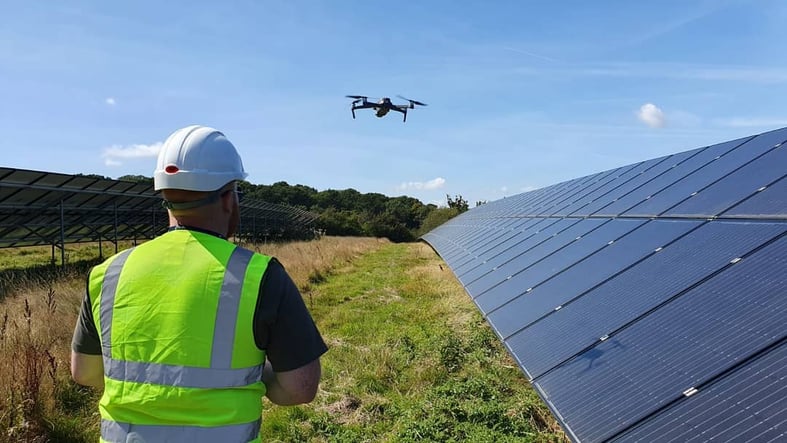For every company in the power and utilities sector, safety is critical. Within inspection and monitoring, drones can provide remote solution in hazardous or hard to reach areas in a fraction of the time, eliminating the need to put workers in harm’s way.
It is therefore no surprise that across these sectors, companies are increasingly harnessing the power of drones combined with cutting edge technology, to maximise the efficiency and safety of their plant operations. From oil and gas, to wind farms, to hydroelectric dams, we take a look at some specific use cases where drones are already being used to optimise safety and efficiency.
.png?width=866&name=drone%20oil%20and%20gas%20(1).png)
Many oil and gas companies are switching to drone technology in their inspection and maintenance procedures. Use cases for drones in this space include inspections of chimneys, storage tanks, refineries, and offshore rigs. Drones can also be used to internally inspect the smaller spaces of chimneys that are simply too dangerous for humans. In pipeline leak detection, the thermal imaging technology in drones can detect hazardous materials and mitigate potential gas leaks that could cause electrical fires. Additionally, drones are able to provide a quick evaluation of hard to reach areas, as well as high quality data and imagery of the inspection area.
Traditional methods of powerline inspection can be a very dangerous job for technicians, working at heights with many hazards to be assessed and mitigated against. The increase in drone technology means that there is a significantly reduced need to put humans at risk when surveying and repairing the pylons and wires of power lines. Similar to roof assessments, these inspections can occur in hazardous conditions such as in extreme weather, exacerbating an already dangerous task. Drones can be used in place of t to inspect power lines in their entirety; not only does this reduce worker risk, but it also means that powerline inspections may be completed more frequently with a higher level of accuracy, helping to reduce downtime and power outages.
In recent years, drones have become a vital tool in the inspection of solar panels. Compared with traditional methods of handheld thermal imagers, drones have the power to collect data 50x faster, decreasing the need for hazardous man hours, thereby minimising risk. These time saving benefits mean that efficiency is greatly improved, with operators able to detect more potential flaws in the solar panels, helping enormously with maintenance.

Inspection and repairs of offshore wind installations can typically be costly, time-consuming, and dangerous. It is for these reasons that drone technology is increasingly being adopted by those in the industry, as a safer, more dynamic alternative.
The conditions which wind turbines must endure can be unforgiving. At heights of up to 800ft, they are constantly exposed to elements including rain, lightning, hail, snow, and salt, all which make for high risk working environments for workers using ropes and platforms. By using drones, operators are able to safely inspect these components, with the addition of technology such as thermal imaging helping to identify issues early on that would have otherwise worsened, leading to costly repairs.
Over the past few years, dam safety has become an increasingly important issue, with concerns over the risks they can pose to those on site and in surrounding areas. Drones help to keep the operator away from potentially hazardous areas, enabling safe inspection of the plant using UAS applications such as topographic mapping, volumetric surveying, and structural assessments. Increased inspection also helps to mitigate risks of serious incidents such as structural collapse or flooding.
The broad application and versatility of drones in this space have introduced more accurate, safe, and efficient ways of working. As the use cases for drones in the power and utilities sector continue to grow, as will the technological advancements that play such a key role in improving the safety and efficiency of the plants.
How ScaleFlyt is helping utilities and power clients
Looking to get more involved in drones in the power and utilities sectors? ScaleFlyt enables you to manage your entire operation and keep a central point of record. Manage your fleet, personnel, projects and missions in one system, with intuitive and powerful mission planning. Ensure compliance with standardised workflows and a secure, digital archive.
Get in touch with the team at ScaleFlyt to discuss how we could help make your next project a success.